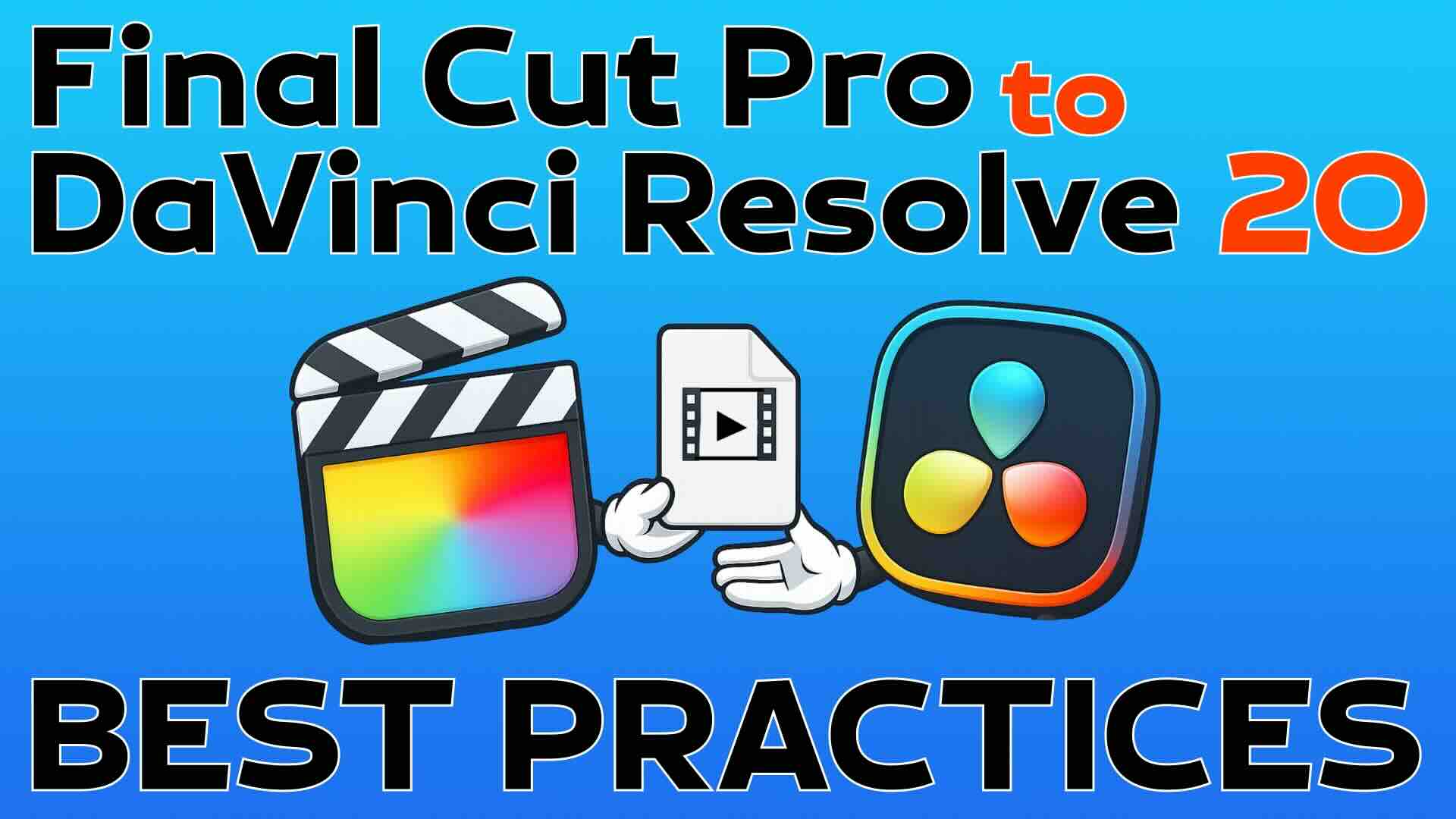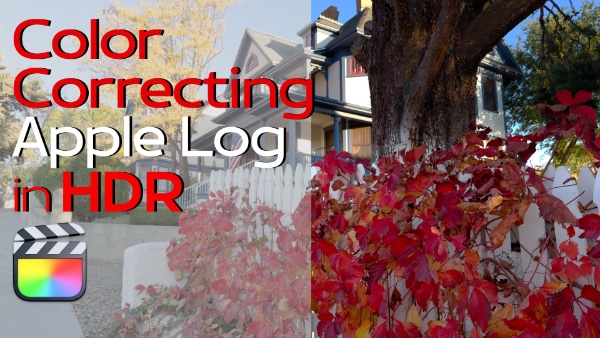Using Graphics and PSDs in Final Cut Pro X
In “Under 5 Minutes” Steve Martin will teach you how to quickly build a simple title graphic in Pixelmator that you can use and edit within Final Cut Pro X.
You will learn how to export the file from Pixelmator as a psd layered graphic, make your title fade in with the cross dissolve transition, and even add drop shadow effects to either the text or graphic.
You can also go back to Pixelmator to make changes to the file and save so that it automatically updates within your Final Cut Pro project.
Welcome to Final Cut Pro X in under 5 minutes. I’m Steve from RippleTraining.com.
Photoshop is the grandaddy of image editing applications. But lately I’ve been building my graphics using a 30 dollar app called Pixelmator. As you’ll see in this episode, it’s simple to use and plays very nicely with Final Cut Pro X.
While this is not a Pixelmator tutorial per se, I want to show you how easy it is to build a layered graphic file for use as a title in Final Cut Pro. Start by creating a new document, choose a Custom preset and enter the resolution to match your video project. Here, I’ll enter 1920 x 1080 and click OK.
By default, Pixelmator creates a white background layer.
If you want the background transparent, drag the opacity slider in the layers palette all the way to the left. I’ll leave the background white.
Select the text tool from the tool palette, then click anywhere in the canvas.
Double-click to edit the text then move it anywhere you’d like.
Use the Style palette to change the text properties like adding a fill color or stroke.
You can apply a style preset by clicking any of these color swatches.
Let’s add a shape.
I’ll click the Shapes tool then choose this clock shape.
As with the text tool, click once in the canvas to add the shape, then Shift-drag to scale it while maintaining its’ proportions.
I’ll change the fill color by clicking the color swatch next to gradient, then choose this teal-green gradient preset.
Great.
Now let’s export the document from the File menu.
In order to work with the layers in Final Cut Pro, you’ll need to choose Photoshop, then click Next.
Before saving, click the New Folder Button and name it “My Graphics” or something similar, then name and save your document into it.
In Final Cut Pro, import the graphic and choose Leave files in place, then import.
Layered photoshop files appear with a badge that looks like a stack of paper.
To view and edit the graphic, double click. A timeline opens revealing the 3 separate layers I created in Pixelmator.
To manipulate the layers, press Shift-T, then click on a graphic in the canvas.
You can move, scale and rotate any element to your liking. You can even animate the layers.
Let’s fade in the clock by selecting the edit point and pressing Command-T to add a cross dissolve. I want the text to fade in a few seconds later, so I’ll trim the layer, select the edit point and press Command-T.
Let’s play back to see how it looks.
Nice.
Ok, now you have the basic idea on how to work with layers. But what if you want to change the color of the graphic or make changes to the text style in Pixelmator and have those changes automatically update in Final Cut Pro?
Well I’m glad you asked.
Right-click on the layered graphic in the browser and choose Reveal in Finder.
Right-click on the file and choose Open with Pixelmator.
I’ll select the clock graphic and change the gradient to a rainbow, then choose Save from File menu. In the save dialog that appears, check the box next to Save copy as, then make sure Photoshop is selected from the menu.
Also make sure the file name is the same as the original document, then save it into the exact same folder you created for the original document. You’ll be asked if you want to replace the file. By all means, replace. Back in Final Cut Pro the graphic automatically updates and we now see the rainbow graphic in the Viewer. Cool. And there’s one more cool thing I want to show you. I generally do not create drop shadow for my graphics in either Photoshop or Pixelmator. The reason is, there is a drop shadow effect built right into Final Cut Pro that makes all other drop shadows pale by comparison.
In the effects browser, type in “drop” then drag the drop shadow effect onto your graphic. Directly in the viewer, you can manipulate the shadow’s skew, perspective placement, and softening using these on-screen controls. How cool is that? And all this starting from a 30 dollar app.
Photoshop is the grandaddy of image editing applications. But lately I’ve been building my graphics using a 30 dollar app called Pixelmator. As you’ll see in this episode, it’s simple to use and plays very nicely with Final Cut Pro X.
While this is not a Pixelmator tutorial per se, I want to show you how easy it is to build a layered graphic file for use as a title in Final Cut Pro. Start by creating a new document, choose a Custom preset and enter the resolution to match your video project. Here, I’ll enter 1920 x 1080 and click OK.
By default, Pixelmator creates a white background layer.
If you want the background transparent, drag the opacity slider in the layers palette all the way to the left. I’ll leave the background white.
Select the text tool from the tool palette, then click anywhere in the canvas.
Double-click to edit the text then move it anywhere you’d like.
Use the Style palette to change the text properties like adding a fill color or stroke.
You can apply a style preset by clicking any of these color swatches.
Let’s add a shape.
I’ll click the Shapes tool then choose this clock shape.
As with the text tool, click once in the canvas to add the shape, then Shift-drag to scale it while maintaining its’ proportions.
I’ll change the fill color by clicking the color swatch next to gradient, then choose this teal-green gradient preset.
Great.
Now let’s export the document from the File menu.
In order to work with the layers in Final Cut Pro, you’ll need to choose Photoshop, then click Next.
Before saving, click the New Folder Button and name it “My Graphics” or something similar, then name and save your document into it.
In Final Cut Pro, import the graphic and choose Leave files in place, then import.
Layered photoshop files appear with a badge that looks like a stack of paper.
To view and edit the graphic, double click. A timeline opens revealing the 3 separate layers I created in Pixelmator.
To manipulate the layers, press Shift-T, then click on a graphic in the canvas.
You can move, scale and rotate any element to your liking. You can even animate the layers.
Let’s fade in the clock by selecting the edit point and pressing Command-T to add a cross dissolve. I want the text to fade in a few seconds later, so I’ll trim the layer, select the edit point and press Command-T.
Let’s play back to see how it looks.
Nice.
Ok, now you have the basic idea on how to work with layers. But what if you want to change the color of the graphic or make changes to the text style in Pixelmator and have those changes automatically update in Final Cut Pro?
Well I’m glad you asked.
Right-click on the layered graphic in the browser and choose Reveal in Finder.
Right-click on the file and choose Open with Pixelmator.
I’ll select the clock graphic and change the gradient to a rainbow, then choose Save from File menu. In the save dialog that appears, check the box next to Save copy as, then make sure Photoshop is selected from the menu.
Also make sure the file name is the same as the original document, then save it into the exact same folder you created for the original document. You’ll be asked if you want to replace the file. By all means, replace. Back in Final Cut Pro the graphic automatically updates and we now see the rainbow graphic in the Viewer. Cool. And there’s one more cool thing I want to show you. I generally do not create drop shadow for my graphics in either Photoshop or Pixelmator. The reason is, there is a drop shadow effect built right into Final Cut Pro that makes all other drop shadows pale by comparison.
In the effects browser, type in “drop” then drag the drop shadow effect onto your graphic. Directly in the viewer, you can manipulate the shadow’s skew, perspective placement, and softening using these on-screen controls. How cool is that? And all this starting from a 30 dollar app.





